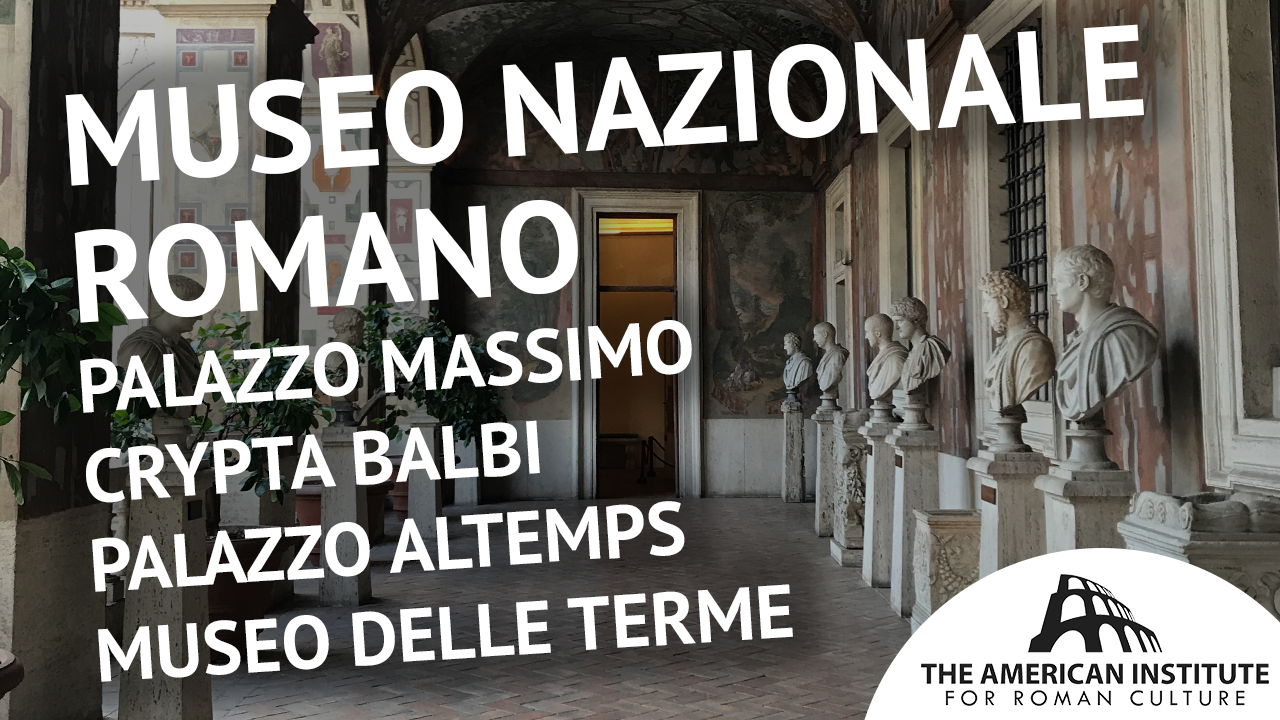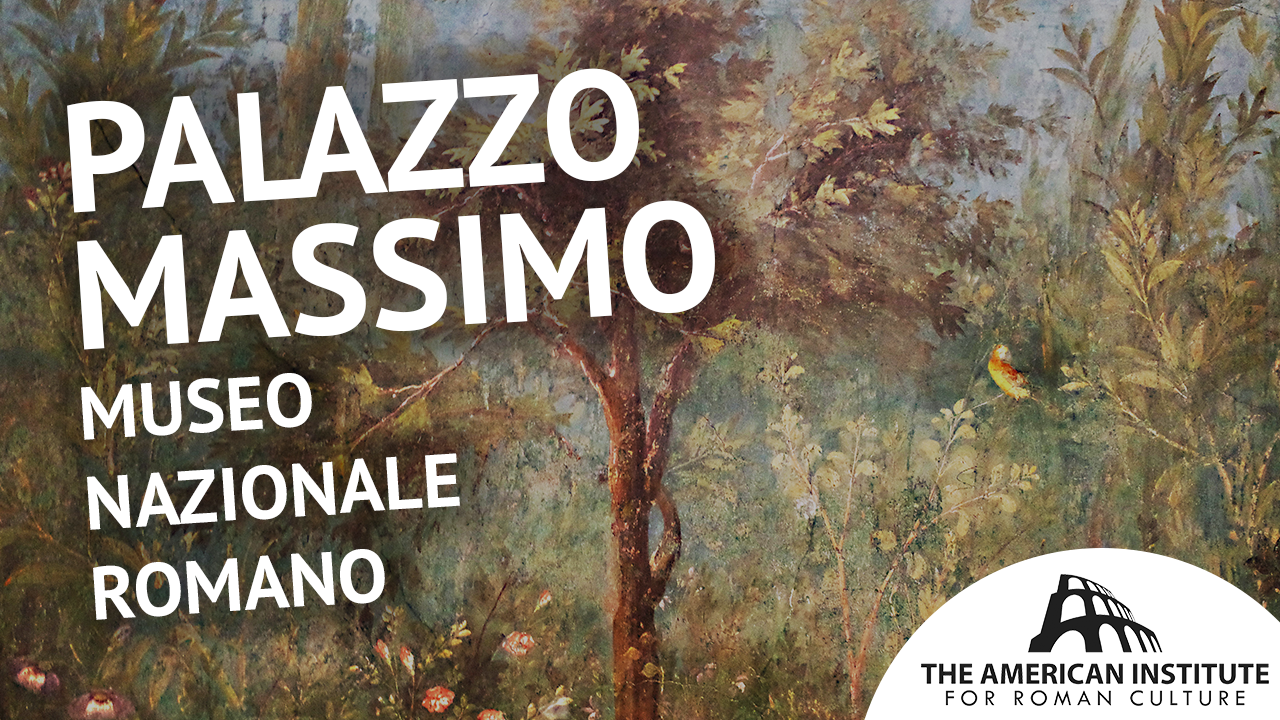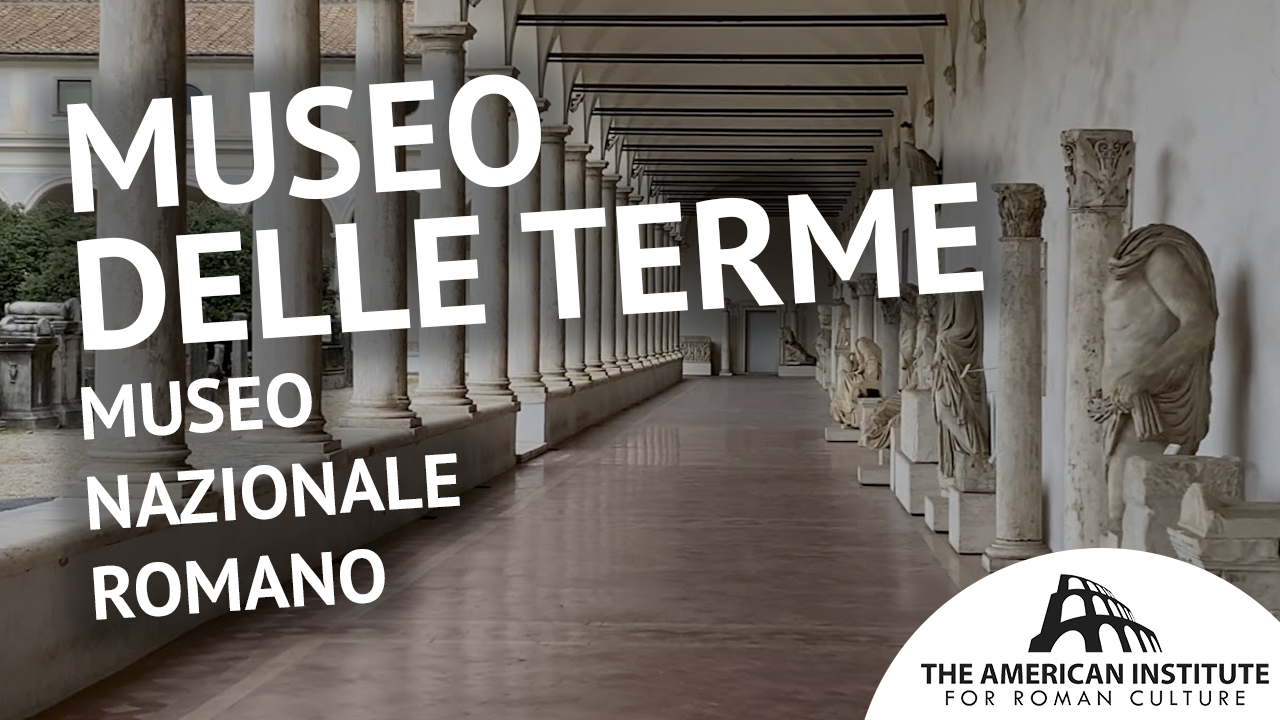Start with our video overview:
The Museo Nazionale Romano hosts an extensive collection of artworks, artifacts, and architectural features across four historic sites in the heart of Rome: Palazzo Altemps, Palazzo Massimo, Museo delle Terme, and Crypta Balbi.
The first location chosen to present Rome’s collection of antiquities in 1889 was the Diocletian baths, originally built between 298-306 CE for the benefit of the public, and were a quintessential act of the imperial building machine. The baths were abandoned in the mid-6th century when wartime destruction of aqueducts cut off the water supply. A millennium later, Michelangelo was commissioned to design the church of Our Lady of Angels and Martyrs in the ruined frigidarium (the cold room) dedicated to the large numbers of Christians believed to have died during the construction of the baths.
Considering their history as a public venue, the bath complex was an appropriate location to open the earliest public display of Roman antiquities: the Museo delle Terme. The intention was to convert more of the ruins into exhibition spaces over time. However, the ever-increasing size of the collection which grew from a nucleus of fine art objects to include inscriptions, architectural fragments, jewelry, and more necessitated a program of redesign in the 1990s, thus additional sites were added. The modern Museo delle Terme is still home to epigraphic and protohistoric collections.
Palazzo Altemps is a 15th-century residence close to Piazza Navona which now houses the history of collecting and Egyptian collections, notably the Ludovisi collection acquired by the Museo Nazionale Romano in 1901. One of the most striking and renowned Ludovisi pieces is the so-called ‘Galatian Suicide,’ a Roman marble copy of a lost Hellenistic bronze sculpture from around 230 BCE. In a remarkable exaltation of a defeated enemy, it depicts a defeated Gaul holding in one hand the lifeless body of his wife (whom he killed to avoid her capture by their conquerors) and in the other, a sword with which he stabs his own chest.
Palazzo Massimo was built as a Jesuit college from 1883-87, coeval to the opening of the Museo delle Terme, and located directly across the street. Its collection encompasses imperial-era sculptures, frescoes, and mosaics. Features of Roman residences are preserved, such as the garden frescoes showing four seasons simultaneously from the villa of Livia, and a mosaic floor which appears to represent a pineapple within a basket of fruit – although as pineapples are native to South America, it is more likely a pine cone. Bronze sculptures of a Hellenistic Prince and a Seated Boxer are on display, thanks to the careful preservation of the ancients, who likely buried them during the frequent invasions of Rome during the 5th century.
The most recent addition to the Museo Nazionale Romano is the Crypta Balbi, the museum of medieval Roman history and urban archaeology. These themes are exhibited in the very architecture of this ancient complex including the Theatre of Balbus, which was continuously reused by the medieval population of Rome, thus bearing a rich archaeological record. The presence of a lime kiln within the site attests to the repurposing of ancient marble for medieval construction in this area of the city, shedding light on human and architectural activity in an often-overlooked period in the history of Rome.
Bibliography
- Armoni, E. De Sanctis, S. Esposito, M. Ventura, M. L. Vinci, “Technological Solutions for Innovative Fruition: The ‘Museo delle Terme di Diocleziano’ Project”, (Rome 2015).
- Gabriel, “Livia’s Garden Room at Prima Porta”, (New York 1955).
- Claridge, “Rome: An Oxford Archaeological Guide”, (Oxford 2010), 481-484; 486-487.
- Marconi, “The Oxford Handbook of Greek and Roman Art and Architecture”, (Oxford 2018), 90, 487.
Explore further:
This content is brought to you by The American Institute for Roman Culture, a 501(C)3 US Non-Profit Organization.
Please support our mission to aid learning and understanding of ancient Rome through free-to-access content by donating today.
Cite This Page
Cite this page as: Darius Arya, The American Institute for Roman Culture, “Museo Nazionale Romano (National Roman Museum)” Ancient Rome Live. Last modified 04/04/2021. https://ancientromelive.org/museo-nazionale-romano-national-roman-museum/
License
Created by The American Institute of Roman Culture, published on 03/29/2021 under the following license: Creative Commons: Attribution-NonCommercial-ShareAlike. This license lets others remix, tweak, and build upon this content non-commercially, as long as they credit the author and license their new creations under the identical terms. Please note that content linked from this page may have different licensing terms.







